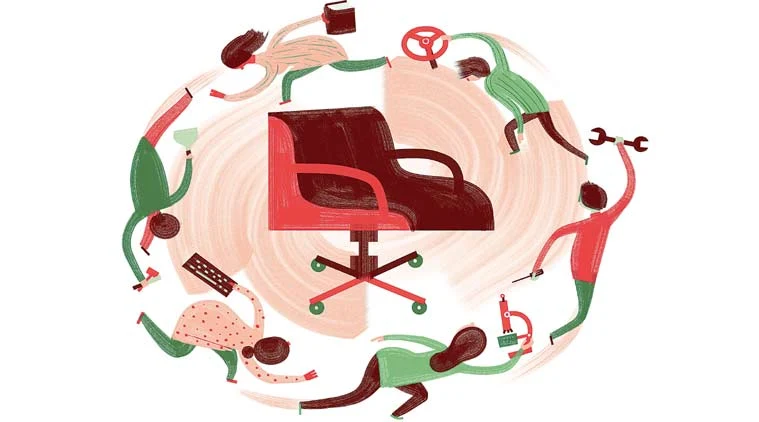Invites applicants at Joint Secretary-level posts through “lateral entry”.

In an apparent bid to bring in expertise from the private sector individuals and infuse talent into the country’s bureaucracy, the BJP-led NDA government has invited “outstanding individuals” to join the government at the joint secretary level at the Centre.
For starters, the Department of Personnel and Training (DoPT) has invited applications for 10 senior level positions in the Departments of Economic Affairs, Revenue, Commerce and Highways among others.
The notification issued by the DoPT says it is looking for 10 “outstanding individuals”, who are willing to contribute towards nation building.
The highlight of this announcement is the salary these lateral entrants will receive — ₹1,44,200 to 2,18,200 per month.
- The government has invited “outstanding individuals” to join the government at the joint secretary level at the Centre.
- The intake will be made in 10 departments initially.
- It will expand to other categories in the second phase.
Specification of Notification
- The eligibility criteria includes individuals working at comparable levels in -
- Private Sector Companies
- Consultancy Organisations
- International/Multinational Organisations
- They are required to have a minimum of 15 years' experience.
- Besides, it includes those working in -
- central public sector undertakings
- autonomous bodies
- statutory organisations
- research bodies
- universities
- The recruitment will be on contract basis for 3 to 5 years.
- The notification specifies a minimum age of 40 years.
- The minimum qualification is graduation from a recognised university or institute.
- Any higher qualification will be an added advantage.
What is Lateral Entery, Pros and Cons ?
Bypassing the UPSC exam, it will select ten ‘outstanding’ individuals for the post of Joint Secretary across the following departments—Revenue, Financial Services, Economic Affairs, Agriculture, Cooperation & Farmers’ Welfare, Road Transport & Highways, Shipping, Environment, Forests and Climate Change, New & Renewable Energy, Civil Aviation and Commerce.
1) The lack of specialisation across the top tier of Indian bureaucracy is a concern that has remained unaddressed until now.
2) IAS officers get recruited at a very early age via the UPSC exams. It is difficult to gauge their administrative judgement and capabilities then. Some may pass with flying colours, while others don’t make the cut even later on in their careers. Allowing for lateral entry of seasoned professionals and experts into the service makes up for this deficiency.
3) Career promotions in the IAS move along seamlessly with few impediments along the way. Attempts to introduce ‘meritocracy’ hasn’t quite worked out. Bringing in experts from the professional sphere is expected to shake the IAS out of their comfort zone.
4) This isn’t the first time that the government brought in professionals from the private sector or academia into the top tier of government. Take a look at the Finance Ministry, Reserve Bank of India and even the current NITI Aayog, which have hired the likes of Raghuram Rajan, Arvind Subramanian and Arvind Panagriya to name a few.
5) The IAS was designed for a time when the State was all-powerful. That reality somewhat changed with liberalisation in 1991, where the state was compelled to cede more space to markets. Therefore, it becomes more critical for the government to ascertain the impact its policy decisions have on various stakeholders such as the private sector, non-profits, and general public, i.e. those who have experienced government from the outside.
1) Lateral entrants from the private sector and academia may not work well with the bureaucracy. The same pretty much goes for any inter-sector scenario. Differences in work culture, turf wars and systemic inertia often come in the way.
2) It’s important to gauge what processes the Centre has put in place to ease the transition and establish authority. Candidates coming from the outside may not know the nuances of the system which can be exploited against them in any number of ways.
3) The IAS establishment is likely to baulk at lateral entrants who haven’t made it through probably the hardest open competitive exam in the world, but because of privilege and social networks.
4) One of the distinguishing aspects that the current crop of IAS officers can hold up is their experience in the field, serving some of the poorest districts in our hinterlands. Those entering from privileged backgrounds and the private sector may have never seen a village school. And probably aren't aware about groud duties or activities of the field.
5) There are also concerns that the introduction of pro-establishment candidates through lateral entry at the position of joint secretary could stifle good civil servants who are resisting against something inadvisable that the government seeks to do.
There are also concerns that government planning jobs for those who already have a good one.
Source: The Hindu, Indian Express, The Better India

0Comments